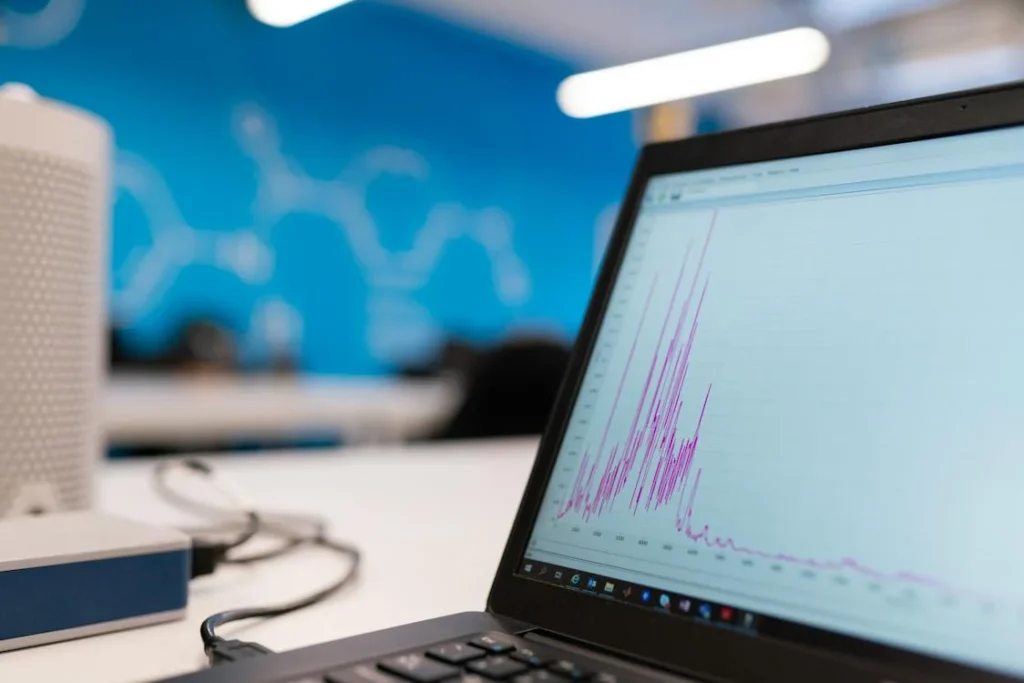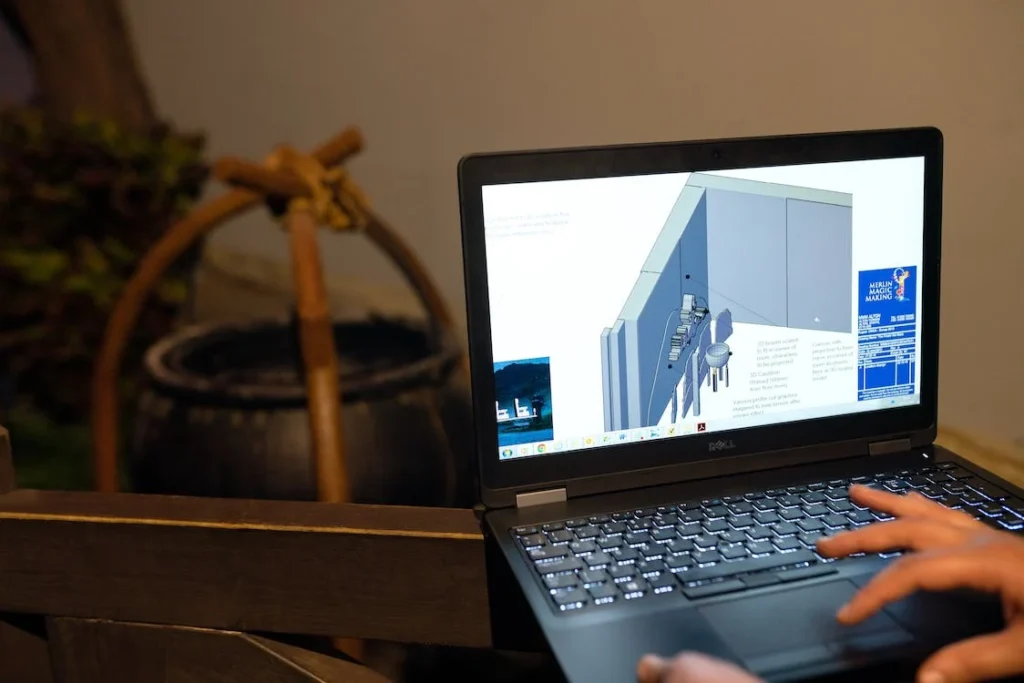Leveraging Social Media for Restaurants
In today’s digital landscape, social media marketing for restaurants has become a vital tool. This section delves into the importance of social media marketing and its role in enhancing brand recognition.
Importance of Social Media Marketing
Social media marketing plays a critical role in the restaurant industry. In 2024, 63% of eateries are using social media platforms to engage with their customers (Restroworks). These platforms offer a direct line of communication, provide insights into customer preferences, and help in building a loyal customer base.
| Benefit | Statistic |
|---|---|
| Customer Engagement | 63% of eateries use social media for customer engagement |
| Influence on Dining Decisions | 72% of customers use platforms like Facebook to make dining decisions (It’s All Goods Inc.) |
Restaurants can share updates, showcase new menu items, and even take orders through social media. By effectively leveraging these platforms, restaurants can drive traffic, both online and offline, thereby increasing sales and customer loyalty.
Impact of Brand Recognition
Brand recognition is crucial for any restaurant’s success. A well-recognized brand can attract new customers and retain existing ones. Social media campaigns are instrumental in achieving this recognition. For example, McDonald’s #RaiseYourArches campaign demonstrated the power of brand recognition through social media, with 98% of users identifying the ad as McDonald’s without any explicit display of food or logo.
The platform’s visual nature allows restaurants to showcase their ambiance, dishes, and customer experiences. High-quality images and engaging content can make a lasting impression on potential customers.
| Campaign | Recognition Rate |
|---|---|
| McDonald’s #RaiseYourArches | 98% |
Social media also allows restaurants to interact with their audience in real-time, fostering a community around the brand. This interaction is invaluable for building a loyal customer base and enhancing brand personality.
For more information on how to use social media for maximizing your restaurant’s potential, check out our articles on local SEO for restaurants and online reputation management for hotels.
Strategies for Successful Restaurant Marketing
To effectively deploy social media marketing for restaurants, it’s important to adopt a multi-faceted strategy that not only engages the audience but also leverages social proof and proven success models. Below are three crucial strategies that can drive effective results.
User-Generated Content
User-generated content (UGC) has become a powerful tool in the realm of social media marketing for restaurants. It serves as authentic social proof and significantly amplifies a restaurant’s reach and engagement. Encouraging diners to share their experiences online offers several benefits:
- Enhanced Credibility: When customers share their positive experiences, it builds trust among potential new diners.
- Increased Engagement: UGC often leads to higher levels of engagement as other customers interact with the content.
- Cost-Effective Marketing: Harnessing UGC can reduce marketing costs since the content is created by the users.
For example, McDonald’s has successfully leveraged UGC to engage with their audience, highlighting the importance of incorporating it into social media strategies (Restroworks).
Effective Social Media Management
Effective social media management ensures that a restaurant’s online presence is consistent, engaging, and responsive. This involves several key practices:
- Regular Posting: Keeping a consistent posting schedule helps maintain audience interest and engagement.
- Interactive Content: Posting polls, quizzes, and questions can boost interaction and engagement.
- Monitoring Trends: Staying ahead with current social media trends can give a competitive edge.
Sweetgreen has demonstrated this with a Reels-optimized ad campaign on Instagram, which resulted in a 7X incremental lift in sales and significantly reduced costs per purchase and conversion (Restroworks). For more on this topic, check out digital marketing for hotels.
Replicating Successful Campaigns
Learning from successful campaigns and replicating their strategies can lead to substantial gains. Analyzing metrics from past campaigns helps understand what worked well and what didn’t. Here are key steps to replicate success:
- Data Analysis: Evaluate the performance metrics of previous campaigns to identify successful elements.
- Content Reuse: Repurpose high-performing content for future campaigns.
- Audience Feedback: Incorporate feedback from customers to improve forthcoming campaigns.
Wave Asian Bistro & Sushi in Mount Dora, Florida, achieved consistent growth by sharing authentic content, including behind-the-scenes glimpses of the kitchen and chefs at work. This illustrates the value of authenticity in connecting with the audience.
For more strategies, visit our detailed guide on hospitality marketing strategies.
By integrating these strategies, restaurants can elevate their social media presence, drive customer engagement, and ultimately boost foot traffic and sales. For a deeper understanding of how to utilize these strategies, explore our comprehensive resources on online reputation management for hotels and local SEO for restaurants.
Platforms for Engaging Customers
Social media platforms provide dynamic opportunities for restaurants to engage with customers and enhance their brand presence. This section explores how Instagram, Facebook, and TikTok can be effectively utilized for social media marketing for restaurants.
Instagram Marketing
Instagram is a powerhouse for visual storytelling, making it an ideal platform for restaurants to showcase their culinary offerings. With a focus on high-quality photos and videos, restaurants can attractively present their menu items and ambiance.
- User-Generated Content: Restaurants can benefit from reposting content created by guests, providing free publicity and fresh perspectives on their establishment.
- Visual Appeal: High-quality images and videos of dishes can entice potential customers, increasing the likelihood of dining visits.
| Instagram Strategy | Average Engagement Rate (%) |
|---|---|
| User-Generated Content | 4.5 |
| High-Quality Imagery | 6.3 |
| Influencer Collaborations | 7.1 |
Facebook Engagement
With over 2 billion active users, Facebook is crucial for restaurants to maintain a broad online presence. It facilitates direct communication with customers, updates on menus, special offers, and events.
- Customer Reviews: Utilizing the review feature helps build credibility and trust.
- Community Building: Restaurants can establish and nurture a loyal community by engaging with followers through thoughtful posts and responses.
| Facebook Strategy | Reach (%) |
|---|---|
| Engaging Posts | 25 |
| Customer Reviews | 40 |
| Event Promotions | 35 |
TikTok for Visual Content
TikTok’s short-form video content provides an excellent platform for restaurants to engage audiences with dynamic and entertaining clips.
- Viral Potential: Restaurants can create viral trends and challenges that tap into a broader audience.
- Behind-the-Scenes: Sharing behind-the-scenes footage of food preparation or restaurant operations can humanize the brand and foster customer loyalty.
| TikTok Strategy | Engagement Rate (%) |
|---|---|
| Trend Participation | 8.0 |
| Behind-the-Scenes Clips | 5.5 |
| Recipe Demonstrations | 6.7 |
Leveraging these social media platforms enables restaurants to create engaging content, foster community, and drive foot traffic. For more information on digital marketing for hotels and video marketing for hotels, visit our other comprehensive guides.
Driving Traffic and Sales
Implementing effective social media marketing strategies can significantly boost traffic and sales for restaurants. By promoting online ordering, showcasing new menu offerings, and utilizing teaser campaigns, restaurants can harness the power of social media to engage customers and drive conversions.
Promoting Online Ordering
Social media platforms serve as excellent promoters for restaurant websites, especially those offering online ordering services. Facebook, for instance, allows restaurants to add their menus directly to their page, enabling customers to browse and order without leaving the platform (Gloria Food). Promoting this feature can increase convenience for customers and drive more sales.
| Social Media Platform | Online Ordering Feature |
|---|---|
| Menu Browsing, Direct Ordering | |
| Story Links to Online Ordering | |
| TikTok | Links in Bio to Ordering Pages |
To further enhance this strategy, integrate local SEO for restaurants to ensure that your online ordering services reach nearby customers searching for dining options.
Showcase New Menu Offerings
Keeping customers informed about new menu releases, events, and promotions through social media can generate excitement and maintain engagement. Innovative approaches, like teaser campaigns, can create anticipation and drive orders (Gloria Food). Sharing enticing photos of new dishes or special events on platforms like Instagram can captivate your audience.
Consider using Instagram stories or reels to highlight new menu items, as visual content can have a significant impact on customer interest. For example, Sweetgreen saw a 7X incremental lift in sales with a Reels-optimized ad campaign (Restroworks). Posting visually appealing content is essential, especially when targeting millennials.
For more strategies on engaging customers, visit our section on hospitality marketing strategies.
Teaser Campaigns for Excitement
Teaser campaigns are an effective way to create buzz and anticipation around upcoming events, menu items, or promotions. These campaigns can be rolled out gradually, revealing little snippets of the news and keeping customers intrigued.
Leveraging multiple social media platforms to roll out these teasers can maximize reach. Use short clips on TikTok, stories on Instagram, and scheduled posts on Facebook. Each platform has its strengths:
| Platform | Teaser Campaign Use |
|---|---|
| TikTok | Short, engaging videos revealing glimpses of new items |
| Stories and reels for visual teasers | |
| Scheduled posts with countdowns and sneak peeks |
User-generated content (UGC) can also play a role in teaser campaigns. Encouraging customers to share their experiences or guesses about the new offerings and reposting this UGC on your social pages can build community involvement and drive organic reach.
To understand the impact of professional imagery on social campaigns, refer to our insights on video marketing for hotels.
By incorporating these strategies into your digital marketing for hotels plan, restaurants can effectively drive traffic and sales through social media, ensuring sustained growth and customer engagement.
Enhancing Brand Loyalty
Building brand loyalty is essential for restaurants seeking to thrive in a competitive market. By leveraging social media marketing, restaurants can foster deep connections with customers, turning casual diners into devoted patrons.
Building Brand Personality
Consistent brand personality on social media platforms helps create an instantly recognizable brand, reinforcing identity both online and offline. Restaurants should maintain a uniform tone, style, and message across all posts to establish a cohesive brand voice.
- Tone of Voice: Use a friendly and approachable tone to make followers feel welcomed and valued.
- Visual Elements: Incorporate distinct visual elements such as logos, color schemes, and photography styles.
- Engaging Captions: Write engaging captions that reflect the restaurant’s personality, whether it’s playful, elegant, or rustic.
Direct Customer Interactions
Social media allows restaurants to engage with customers directly, enabling interactions that may not frequently occur within the physical restaurant setting. Direct engagement can significantly boost customer loyalty and trust.
- Respond to Comments and Messages: Promptly replying to customer questions and feedback shows that the restaurant values its patrons.
- Live Q&A Sessions: Host live question and answer sessions to address customer queries in real-time.
- Polls and Surveys: Use polls and surveys to gather customer opinions and preferences.
Online Reputation Management
Managing online reputation is crucial for maintaining a positive brand image and boosting customer confidence. Effective online reputation management involves monitoring and responding to customer reviews and feedback across various platforms.
- Monitor Reviews: Track reviews on platforms such as Yelp, Google, and TripAdvisor.
- Respond to Feedback: Address both positive and negative feedback promptly and professionally.
- Encourage Reviews: Motivate satisfied customers to leave positive reviews by providing excellent service and engaging experiences.
For more detailed strategies, explore our article on online reputation management for hotels.
| Social Media Platform | Customer Engagement Rate (%) | Ideal Post Frequency |
|---|---|---|
| 4.21 | 3-5 times per week | |
| 0.16 | 2-3 times per week | |
| TikTok | 5.30 | 1-2 times per day |
Figures reflect engagement rates and recommended post frequencies for effective customer interaction.
For further reading on hospitality marketing trends and effective strategies, consider visiting our pages on hospitality marketing strategies and video marketing for hotels.
Leveraging the Power of Reviews
Online reviews play a pivotal role in a restaurant’s reputation and success. Effective social media marketing for restaurants incorporates these reviews to build trust and credibility among diners.
Trust in Online Recommendations
Consumers increasingly turn to online reviews before choosing dining locations. In fact, 88% of consumers trust online reviews as well as recommendations from friends on social platforms.
| Trust Level | Percentage of Consumers |
|---|---|
| Online reviews | 88% |
| Personal recommendations | 84% |
This data underscores the significant impact of online reviews on consumer trust and decision-making for restaurants.
Responding to Customer Feedback
Responding to customer feedback demonstrates that a restaurant values its patrons’ opinions and is committed to improving their experience. Timely and professional responses to reviews can enhance a restaurant’s reputation. Responding to negative feedback with solutions or apologies can mitigate damage and show potential customers that the restaurant cares.
For tips on managing feedback, visit our guide on online reputation management for hotels.
Monitoring Online Reputation
Constant monitoring of online reviews across different platforms is crucial for maintaining a positive reputation. Monitoring tools and strategies can help identify areas for improvement and ensure that customer concerns are promptly addressed. With 84% of customers trusting online reviews as much as personal recommendations (It’s All Goods Inc.), consistent monitoring helps maintain trust and customer loyalty.
Utilizing a hospitality marketing agency can streamline the process of monitoring and responding to reviews. Additionally, understanding the nuances of digital marketing for hotels can provide further insights into enhancing online reputation and driving traffic.
For strategies on boosting your restaurant’s presence in local search results, explore our article on local SEO for restaurants. This helps ensure that potential customers find trustworthy reviews when searching for dining options in their area.
Leveraging the power of reviews can have a profound impact on a restaurant’s success. By fostering trust in online recommendations, effectively responding to customer feedback, and diligently monitoring online reputation, restaurants can enhance their appeal and drive more foot traffic.
Maximizing Visual Appeal
Creating appealing visual content is a pivotal aspect of effective social media marketing for restaurants, as it helps attract customers and encourages engagement.
Importance of Quality Food Photos
The role of quality food photography cannot be understated. Restaurants can increase sales by up to 65% by using professional, well-styled food photos on social media. High-resolution images showcasing the texture, color, and freshness of food help potential customers in their purchasing decisions.
Impact of Professional Imagery
Professional imagery plays a significant role in creating a visually appealing social media presence. High-quality photos and videos elevate the attractiveness of dishes and contribute to visual storytelling excellence. Professional photographers capture the finest details, ensuring that each food item looks as delicious and inviting as possible.
Restaurants should consider investing in professional photography services or using high-end cameras and lighting equipment to produce quality images.
| Benefit | Professional | Amateur |
|---|---|---|
| Enhanced Visual Appeal | ✓ | ✗ |
| Customer Trust | ✓ | ✗ |
| Increased Engagement | ✓ | ✗ |
| Consistent Quality | ✓ | ✗ |
Encouraging User-Generated Content
User-generated content (UGC) serves as powerful social proof and can significantly increase a restaurant’s reach and engagement. Encouraging patrons to share their dining experiences on social media, especially on Instagram, helps build a community around the brand.
Photogenic dishes and attractive restaurant interiors can motivate customers to capture and share their experiences. By sharing UGC on the restaurant’s own social media pages, restaurants can build authentic connections with their audience and boost their overall social media strategy (Beambox).
For more in-depth strategies, visit our page on hospitality marketing strategies and learn the nuances of tailoring images for platforms like Instagram, TikTok, and more.
Leveraging high-quality food photos, professional imagery, and user-generated content can significantly enhance a restaurant’s visual appeal on social media, attracting more customers and driving greater engagement. For further insights on managing your restaurant’s online image, explore our article on online reputation management for hotels.
Tailoring Content for Different Platforms
Tailoring content to different social media platforms is essential for maximizing engagement and driving traffic to restaurants. Understanding the unique requirements and user behaviors of each platform can help create effective and impactful content.
Customizing Strategies
Effective social media marketing for restaurants involves developing customized strategies that align with the objectives of each platform. This includes:
- Identifying Target Audiences: Each platform caters to different demographics. For instance, Instagram appeals to younger audiences, while Facebook reaches a broader age range.
- Setting Clear Goals: Establishing specific goals such as increasing brand awareness, driving foot traffic, or promoting online orders.
- Analyzing Competitors: Reviewing competitors’ successful strategies and adapting them to match your brand’s identity.
Platform-Specific Content
Creating platform-specific content ensures that the message resonates with the audience and meets the platform’s standards.
| Platform | Preferred Content Types | Key Features |
|---|---|---|
| High-quality photos, stories, reels, IGTV | Visual storytelling, hashtags, engagement tools | |
| Mixed media posts, live videos, event promotions | Community building, ad targeting | |
| TikTok | Short, engaging videos, challenges, user-generated content | Viral trends, soundtracks, filters |
| Short-text updates, promotions, customer service interactions | Real-time engagement, hashtags, trends | |
| Visually appealing pins, blog links, recipe ideas | Visual search, boards, repins | |
| Professional insights, company updates, B2B content | Networking, content sharing |
Instagram’s visual nature is ideal for showcasing appealing food items through high-quality photos and videos. Features like Stories, Reels, and IGTV enhance visual storytelling, making it a key platform for hospitality marketing strategies.
Facebook excels in building a community around your restaurant. Using mixed media posts, live videos, and event promotions can help engage a broader audience. Facebook’s ad targeting capabilities allow for precise audience segmentation (Superb Experience).
TikTok
TikTok is perfect for short, entertaining videos that can go viral. Engaging in challenges and encouraging user-generated content can boost visibility and user engagement. Restaurants can use TikTok to showcase their creativity and connect with younger audiences (Olo).
Twitter’s real-time nature makes it suitable for updates, promotions, and customer service interactions. Short-text updates and trending hashtags help drive engagement and maintain an active presence (It’s All Goods Inc.).
Pinterest is a visual search engine where restaurants can share visually appealing pins, blog links, and recipe ideas. It’s a great platform for driving traffic to the restaurant’s website and other social media pages (Paytronix).
LinkedIn is essential for B2B interactions and sharing professional insights. It helps build the brand’s thought leadership in the industry by posting company updates and networking with professionals.
Engaging Across Various Platforms
Engaging users across multiple platforms requires a consistent yet adaptable approach:
- Consistent Branding: Maintain a unified brand voice and aesthetic across all platforms.
- Platform Adoption: Stay current with the latest trends and features unique to each platform.
- Interactive Content: Encourage user interaction through polls, questions, and comments.
Adapting strategies to fit various social media platforms ensures restaurants effectively reach and engage with their audience, driving foot traffic and boosting brand recognition. For deeper insights into digital marketing for hotels and restaurants, explore our related articles.
Trends and Best Practices
Social media marketing has become indispensable for restaurants aiming to boost foot traffic and enhance brand loyalty. A robust social media strategy is essential to stay ahead in the digitally competitive hospitality industry.
Staying Ahead with Trends
To excel in social media marketing for restaurants, it is crucial to stay updated with the latest trends on platforms like Instagram, Facebook, and TikTok. Social media-savvy restaurants often showcase creativity, engage fans, and establish a strong brand identity by keeping up with these trends (Olo).
Key trends include:
- Utilizing Instagram Stories and Reels for behind-the-scenes content.
- Incorporating interactive features like polls and quizzes to engage followers.
- Leveraging TikTok’s viral challenges to reach younger audiences.
Balancing Professional and Lo-Fi Imagery
Restaurants that excel in social media use a combination of professional and lo-fi imagery to create an authentic yet visually appealing presence. According to Olo, Seamless integration of user-generated content, agility, and quick wit helps bring the brand to life and effectively engage the audience.
| Imagery Type | Description | Benefits |
|---|---|---|
| Professional Imagery | High-quality, professionally taken photos and videos | Highlights the best features of dishes, elevates brand perception |
| Lo-Fi Imagery | Casual, often smartphone-taken photos and videos | Adds authenticity, relatability, and approachability |
Wave Asian Bistro & Sushi in Mount Dora, Florida, effectively uses a blend of authentic content, including behind-the-scenes glimpses of the kitchen and chefs at work, demonstrating the value of genuine content in enhancing social media presence (Restroworks).
Utilizing User-Generated Content
User-generated content (UGC) is an excellent way to boost engagement and trust among existing and potential customers. Restaurants should encourage patrons to share their dining experiences and feature this content on their social media channels.
- Encourage Reviews and Photos: Prompt customers to leave reviews and upload photos of their meals. This not only enriches the restaurant’s online presence but also acts as word-of-mouth marketing.
- Create Branded Hashtags: Use and promote specific hashtags that customers can include in their posts, making it easier to find and share UGC.
High-engagement posts often garner numerous comments, likes, and views, which underscores the importance of a dedicated team of strategists who have a clear understanding of the brand and target audience’s interests (Olo).
Implementing these trends and best practices can significantly enhance a restaurant’s social media performance, drive foot traffic, and increase overall sales. For more comprehensive strategies, consider consulting a hospitality marketing agency or exploring digital marketing for hotels.




















